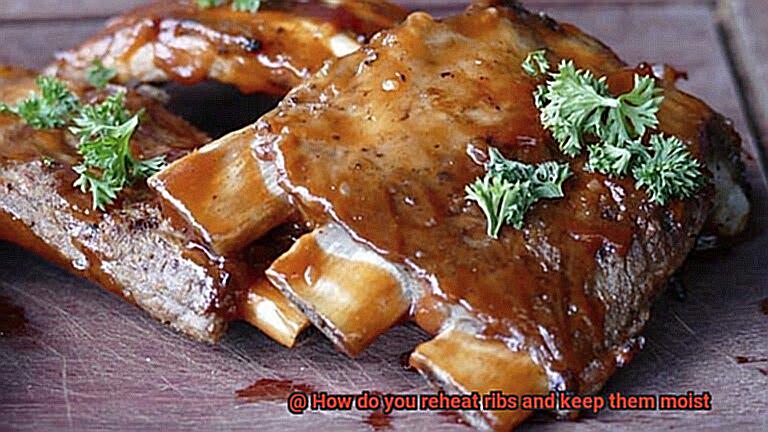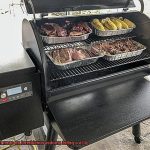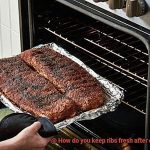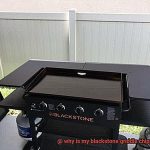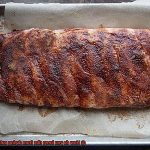- Ah, ribs – the quintessential summer dish that’s perfect for any occasion. With their smoky flavor and tender texture, they’re a crowd-pleaser that never goes out of style. But what happens when you have some leftover ribs? Do you resign yourself to eating dry, tough meat? Not so fast.
- Reheating ribs can be a daunting task, but fear not – we’ve got your back. In this blog post, we’ll explore the best ways to reheat your ribs while keeping them moist and delicious. Trust us; you won’t even be able to tell they’re leftovers.
First things first: say goodbye to the microwave. Sure, it’s quick, but microwaving your ribs will only lead to disappointment. The gelatin in the meat will liquefy and run away from the meat, leaving you with dry ribs that are anything but appetizing. Instead, we’ll share some tried-and-true methods that will keep your meat juicy and flavorful.
So buckle up and get ready to learn how to reheat your ribs like a pro. From oven-baking to sous-vide cooking (yes, really.), we’ll cover all the bases so that you can enjoy those leftovers without sacrificing taste or texture. Let’s dive in.
Contents
Reheating Ribs in the Oven
Reheating ribs in the oven can be a wonderful way to restore their flavor and tenderness. However, it’s important to follow the right method to prevent ruining your meal.
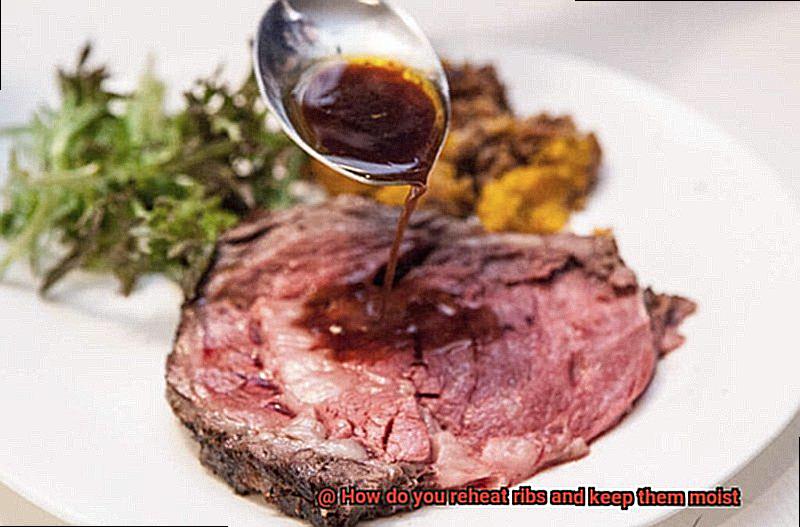
The first step to reheating ribs in the oven is preheating it to 250°F. This low temperature ensures that your ribs don’t dry out during the reheating process. To keep moisture locked in, wrap your ribs tightly in aluminum foil, adding a little liquid such as apple juice or chicken broth.
After wrapping your ribs, place them on a baking sheet and pop them into the oven. Remember that the amount of time required for reheating depends on the size and thickness of your ribs and how many you are reheating at once. A single rack of ribs usually takes around 20-30 minutes to reheat thoroughly.
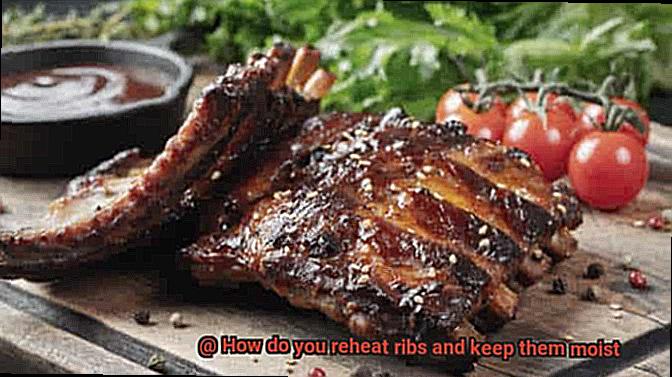
To ensure that your ribs are completely reheated, check their internal temperature using a meat thermometer. The temperature should reach 165°F for food safety measures, as well as ensuring that your ribs are heated through all the way.
Once fully reheated, remove the ribs from the oven and let them rest for a few minutes before unwrapping them. This method helps maintain their juicy and tender texture. Finally, serve your reheated ribs with your preferred barbecue sauce or other toppings for added flavor.
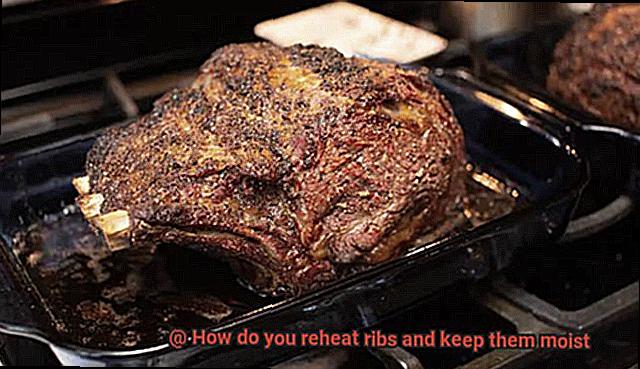
Reheating Ribs in a Slow Cooker
Reheating ribs in a slow cooker is your answer to mouthwatering deliciousness. As an expert in this field, let me guide you through the simple steps that will help you achieve perfect and tender ribs.
Firstly, ensure that your slow cooker is large enough to accommodate your ribs and that it is clean and free of any residue from previous meals. The last thing you want is to taint the flavor of your ribs or have them cook unevenly.
Next, remove the ribs from their packaging and place them in the slow cooker. To keep them moist, add a small amount of liquid to the bottom of the pot. You can use water, broth, or even barbecue sauce to enhance their flavor – it’s entirely up to you.
Set your slow cooker to low heat and let it work its magic for several hours. Remember that the cooking time will depend on the thickness and size of your ribs. As a general rule of thumb, aim for around 4-6 hours of cooking time. Trust us; patience is key when it comes to achieving mouthwatering results.
Once the cooking time is up, check the temperature of your ribs with a meat thermometer. Make sure they reach an internal temperature of 145°F (63°C). If they’re not quite there yet, keep them cooking for another hour or so until they reach the desired temperature.
When your ribs are fully cooked, remove them from the slow cooker, and let them rest for a few minutes before serving. This will allow the juices to redistribute throughout the meat and ensure maximum flavor and tenderness.
Reheating Ribs in the Microwave
Reheating ribs in the microwave can be a quick and easy solution, but it requires care and attention to keep your ribs moist and tender.
To prevent your ribs from becoming dry and tough, start by covering them with a damp paper towel or plastic wrap before microwaving them. The steam created by the towel or wrap will help keep the meat moist during the reheating process. This step is crucial for delicious and juicy ribs.
The next essential tip is to use low power when microwaving your ribs. High power can lead to uneven heating and overcooked meat, which can result in dryness. Instead, heat your ribs on low power for 2-3 minutes before checking them to see if they’re heated through. If not, continue microwaving them in 30-second intervals until they’re warm enough.
It’s also crucial not to overheat your ribs in the microwave. Overheating can cause the meat to dry out quickly and become tough and chewy. To avoid this, keep an eye on your ribs while reheating them and adjust the microwave setting accordingly.
In summary, here are some tips for reheating ribs in the microwave:
- Cover your ribs with a damp paper towel or plastic wrap before microwaving them.
- Use low power to ensure even heating without overcooking.
- Heat your ribs for 2-3 minutes on low power and then check to see if they’re heated through.
- Avoid overheating your ribs, which can lead to dryness and toughness.
Temperature Matters
The key to reheating ribs is ensuring that they are heated all the way through without drying them out. To achieve this, low and slow heat is necessary. There are two popular methods for reheating ribs: using an oven or a grill.
To use the oven method, preheat your oven to a low temperature of 250°F. Allow the ribs to come to room temperature for 30 minutes before placing them in a baking dish and covering them tightly with foil. Let them cook for about 20 minutes, then check the internal temperature with a thermometer. Once it reaches 165°F, your succulent ribs are ready to devour.
Alternatively, if grilling is more your style, preheat your grill to a low temperature of around 225°F. Wrap the ribs tightly in foil and place them on the grill grates. Close the lid and let them cook for 30-45 minutes depending on how many ribs you’re heating up. Again, check the internal temperature with a thermometer before removing them from the grill.
Whatever you do, resist the temptation to microwave your ribs. Microwaving can lead to uneven heating and rubbery texture, which nobody wants for their perfectly cooked ribs.
Avoiding Overcooking
Overcooking is a real concern, which can result in dry and tough meat. Fortunately, there are some tricks to avoid overcooking and enjoy your reheated ribs to the fullest.
One of the best ways to prevent overcooking is by using a low-heat method. This means heating the ribs slowly over a low heat setting on your grill or in an oven. Patience is key here, as slow heating will ensure that the ribs are evenly heated without being exposed to high temperatures that can dry out the meat. The result is tender and moist ribs that retain their flavor.
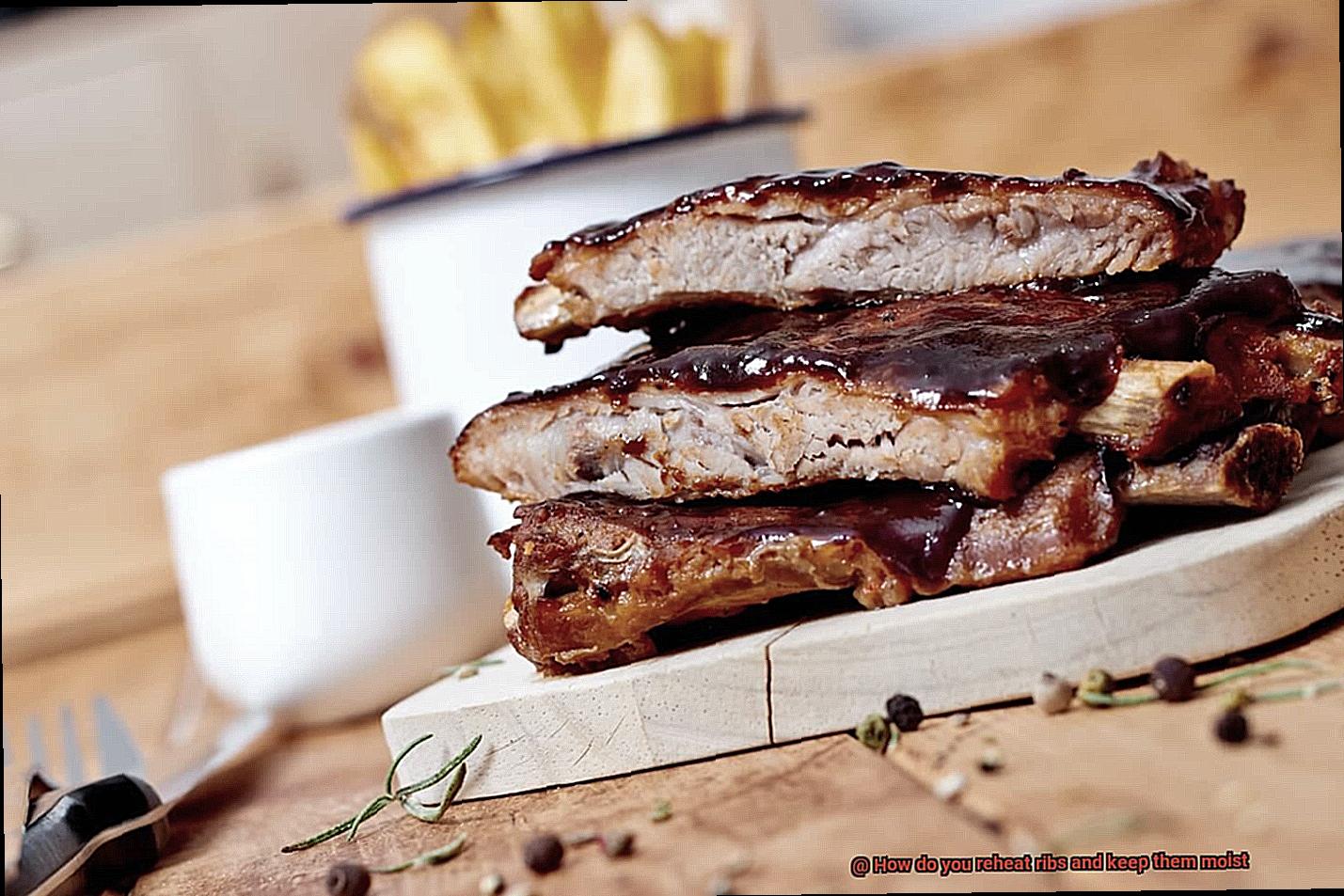
Another great way to prevent overcooking is by reheating your ribs in a sealed container with some liquid. This could be anything from broth to apple juice or even beer. The liquid will create steam, which will help keep the meat moist while it reheats. As a result, your ribs won’t turn into tough leather and will retain their juiciness.
Monitoring the temperature of your reheated ribs is also crucial. Use a meat thermometer to ensure that the internal temperature of the meat reaches a safe level without going too high. The recommended temperature for reheating ribs is 165°F. So, keep an eye on your thermometer and don’t let your ribs go above this temperature.
To recap, here are some tips for avoiding overcooking when reheating your ribs:
- Use a low-heat method to heat the ribs slowly and evenly
- Reheat your ribs in a sealed container with some liquid to create steam and keep them moist
- Monitor the temperature closely with a meat thermometer and don’t let it go above 165°F
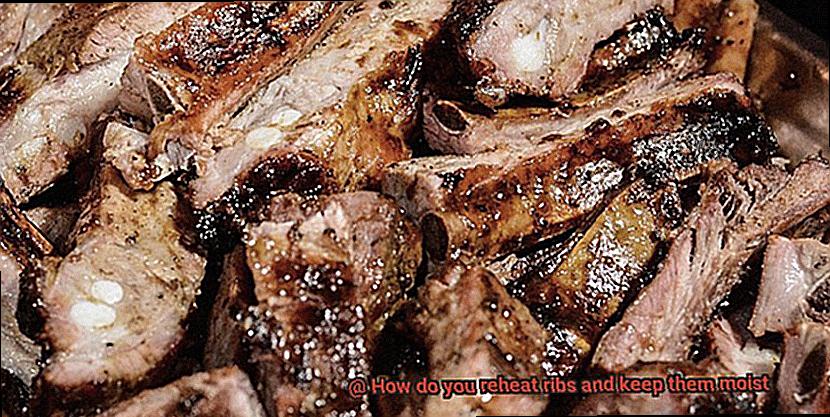
Adding Flavor While Reheating
Fear not, because we have some tips to help you add flavor while reheating those delicious ribs.
First and foremost, make sure your meat is well-seasoned before reheating. Simply adding extra rub or seasoning to the ribs before putting them in the oven or on the grill can enhance their flavor significantly.
But why stop at seasoning when you can also use sauces and marinades? Brushing your ribs with your favorite BBQ sauce or marinating them overnight in a flavorful mixture can take your ribs to the next level. However, be sure to pat the ribs dry before reheating to avoid excess moisture.
For those of you who love a good smoky flavor, try adding wood chips or chunks to your grill or smoker when reheating the ribs. This will infuse the meat with a delicious smoky taste that will tantalize your taste buds.
If you’re reheating in the oven, consider adding some liquid to the pan. A mixture of broth and BBQ sauce will steam and braise the ribs, keeping them moist while also adding additional flavor.
Tips for Keeping Ribs Moist
Nobody wants to bite into a dry, tough rib, but reheating ribs can sometimes result in just that. Fear not, with these easy tips, you can keep your ribs moist and flavorful.
- Wrap them up: One of the easiest ways to keep your ribs moist is to wrap them tightly in foil or butcher paper before reheating. This will seal in moisture and prevent it from evaporating during the heating process. Be careful not to wrap them too tightly, as this can cause steaming and make the meat mushy.
- Add some liquid: Another way to keep your ribs moist is to add a bit of liquid when reheating them. Pouring a little bit of water or broth over the ribs before covering them adds moisture that will help keep the meat juicy as it heats up.
- Low and slow: Reheat your ribs at a low temperature for a longer duration. This allows the heat to penetrate the meat slowly and evenly without drying it out. Remember that your ribs have already been cooked once before, so you don’t want to cook them too long or at too high of a temperature.
- Water pan: If you’re reheating ribs on a grill, consider placing a water pan underneath the grates. The water pan acts as a humidifier and will provide moisture to the meat while it cooks. This is especially helpful if you’re reheating your ribs on a charcoal grill, where there’s less moisture in the air.
- Don’t overcook: Overcooking your ribs when reheating is one of the most common mistakes people make. It’s better to undercook them slightly and let them rest for a few minutes before serving. The residual heat will continue to cook them and ensure they’re fully heated throughout without drying them out.
6Qp7Jnf4jRg” >
Conclusion
In conclusion, reheating ribs can be a daunting task, but with a few expert techniques, you can keep them moist and oh-so-tasty. Microwaving is a no-go as it can leave your ribs dry and tough. Instead, opt for the oven, slow cooker or grill at a low temperature for an extended period.
To seal in moisture while reheating your ribs, tightly wrap them in foil or butcher paper and add liquid such as water or broth to the mix. This will help prevent evaporation during the heating process.
For an added flavor boost, consider seasoning your ribs before reheating or brushing them with your favorite BBQ sauce. You could also try adding wood chips or chunks to your grill or smoker for that smoky taste that we all love. If you’re using the oven method, why not add a mixture of broth and BBQ sauce to steam and braise the ribs?
It’s crucial to monitor the temperature closely with a meat thermometer and never let it go above 165°F to avoid overcooking. Remember, patience is key when it comes to achieving mouthwatering results.
By following these tips, you’ll be able to enjoy those leftover ribs without sacrificing taste or texture.

